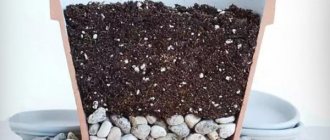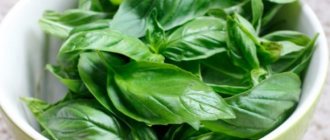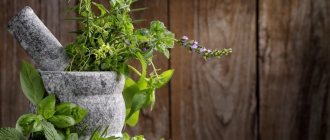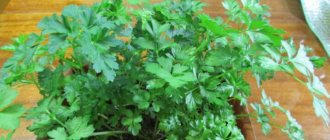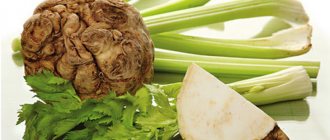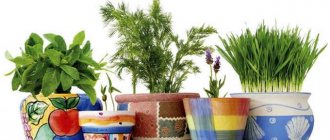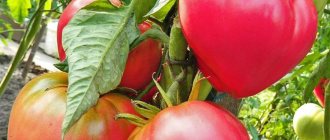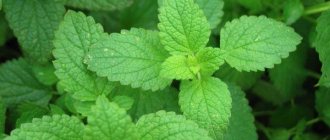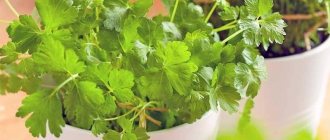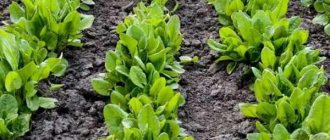Daria Vorontsova
Reading time: 12 minutes
AA
Basil is a genus of plants in the Lamiaceae family, consisting of annual and perennial species. The entire above-ground part of the plant - stem, leaves, inflorescences - contains essential oil, which gives it a pleasant aroma.
That is why basil is used as a spice, adding it to sauces and soups. They flavor canned vegetables, pickles and sausages, and together a mixture of basil and rosemary replaces pepper.
In general, most housewives consider the plant a universal seasoning, adding it to all fish and meat dishes. And in order to always have fresh herbs on hand, they often resort to growing basil at home.
Basil varieties for growing on a windowsill
The best option is to grow several varieties of basil at once. The main thing is to choose them correctly. To do this, you should pay attention to such parameters as compactness and ripening time.
Compactness. Firstly, at home there is not much space on the windowsill for basil. Secondly, if you plan to grow several varieties, all plants should be approximately the same size. Otherwise, large specimens will oppress their more modest “potty neighbors.”
Terms of ripening. Here everything is the other way around. To obtain maximum yield all year round, varieties must be selected so that, as they ripen, they gradually replace each other. That is, while one plant grows new leaves and twigs after being harvested, the other is ready to give them away.
There are many varieties of basil for growing from seeds on a windowsill. Some are created specifically as a potted plant, others can simply be adapted to home conditions. Experts advise the following:
| Variety | Description |
| "Vanilla aroma" | Mid-early (50-60 days), leaves are dark purple. Has a vanilla aroma. |
| "Basilisk" | Potted, early ripening (46-50 days). The plant is compact, its height is only 18-20 cm. It gives a clove-pepper smell. |
| "Clove scent" | Bushes with small leaves and a clove scent. |
| "Anise Gourmand" | Mid-season (60 days). The bush is round in shape. The leaves are small. Anise aroma. |
| "Mint" | Early ripening (45-50 days). Abundant dark green foliage with a glossy sheen. Mint aroma. |
| "Marquis" | Potted, mid-season (65 days). The leaves are green with a clove-pepper scent. |
| "Compatto" | Mid-season (60 days). Height – 20-30 cm. Green leaves, peppery aroma. |
| "Freshness" | Mid-season (55-60 days). The leaves are green, lemon aroma. |
| "Dwarf" | Low (10-20 cm) spherical bush. The leaves are small, the taste is spicy. |
Most often it is advised to opt for small-leaved varieties with green leaves. Purple and large-leaved varieties take longer to grow and require more care.
Which basil do you prefer?
GreenPurple
Unique properties of basil
Basil is widely used in medicine and cooking. It has many positive properties. The plant has an analgesic, antiseptic, bactericidal, diaphoretic, antispasmodic and expectorant effect on the body.
Basil is a universal home remedy that relieves many symptoms.
Basil is used in the treatment of:
- bronchitis;
- asthma;
- tuberculosis;
- urolithiasis;
- hyperemia (increasing the amount of blood supplied to any part of the body);
- cardiovascular and skin diseases;
- conjunctivitis;
- gastroenteritis;
- rheumatism;
- measles;
- headaches;
- caries;
- tartar and plaque;
- pathologies resulting from radiation damage.
In addition, basil strengthens the immune system well.
It is not surprising that many gardeners prefer to grow basil indoors. After all, the plant contains a large amount of potassium, due to which its consumption helps lower blood pressure.
Basil is a healthy and tasty spice
There is a positive effect of basil on a person’s emotional state. The plant helps reduce stress, reduce feelings of nervousness and anxiety. Vitamin A, C, essential mass and phytonutrients included in its composition rid the body of free radicals and help prolong youth.
However, basil also has negative characteristics. Its overdose can cause poisoning. When it comes into contact with mucous membranes, the plant causes irritation. Its use is contraindicated during pregnancy, with vein thrombosis and blood clotting disorders. Thus, despite the wide list of positive properties of this plant, it is strictly not recommended to use it without consulting a doctor.
Basil should be used correctly to avoid harming yourself.
In cooking, basil is used in the preparation of ketchups, sauces, dressings, gravy, and sandwich butter. It is added to products during smoking and canning. It improves the taste characteristics of sausages, pates, omelettes, and salads.
This plant goes well with parsley, tarragon, mint, coriander and marjoram. But it should be borne in mind that basil has a fairly rich aroma that can overpower the smells of other spices. Therefore, it should be used in moderation.
What you need to grow basil
To grow basil at home, you need very few equipment: containers, soil, drainage, seeds and fertilizers. Further, during the cultivation process, you can use available means. These are devices for watering and loosening the soil.
Soil preparation
Basil loves light, fertile soil with good drainage. To grow it, universal soil from the store is suitable, intended either for indoor plants or for seedlings. You can also prepare the soil yourself by taking:
- Garden soil and vermicompost (in proportion 1:4);
- Humus and peat (1:2);
- Humus and coconut fiber (1:2).
Regardless of the type of soil - purchased or made independently - it must be disinfected, that is, disinfected.
The earth can be calcined in the oven, scalded with boiling water or poured with potassium permanganate. In the last two cases, you will have to wait some time until the excess moisture leaves, and only then start sowing.
Selection and preparation of containers
Containers are selected depending on the type of cultivation. If you plan to sow immediately in a permanent place, you can take flower pots with a depth of at least 10-15 cm. Their diameter depends on the future number of plants. They shouldn’t be crowded, but even one or two bushes in a wide pot won’t look attractive. Moreover, in this case they will begin to grow the root mass, and not the ground part.
Pots can be replaced with containers. In them, young bushes are planted at a distance of 10 cm, and I try to sow the seeds sparsely, so that later I do not have to thin out.
If sowing is carried out to obtain seedlings, you can use special containers - containers with individual cells.
The cuttings are rooted in small pots, and as they grow, they are transplanted, or rather, transferred to larger containers.
An adult bush is planted in a pot at a ratio of 1:2 or 1:3, where the first indicator is the diameter of the pot, the second is the diameter of the above-ground part of the plant.
Helpful information
Daria Vorontsova
Amateur gardener. He is interested in growing various greens at home.
Whatever the container is intended for, it, like the soil, must be disinfected. Especially in cases where old pots from other plants are used. If there are salt deposits on it in the form of a white coating on the edges, they should be cleaned first.
- You can treat the container with potassium permanganate, and if the pot is not made of plastic, scald it with boiling water.
When planting a plant in a permanent place, do not forget about drainage. Stagnation of water will negatively affect its growth and development.
Selection and preparation of containers and soil
Growing basil by seeds begins with preparing containers and soil. To plant a plant, you can use any container except plastic. Good options: wooden boxes, paper cups, ceramic pots, and so on. Fine sand or brick fragments should be poured onto their bottom. The drainage layer should be up to 5-10 cm high. Holes should be made at the bottom of the container so that water does not stagnate. Stagnation of moisture can cause rotting of the roots. Lack leads to the death of culture.
Drainage layer for basil
As for the soil for indoor plants, it must be fertile, breathable and non-acidic. The easiest way to plant homemade basil is in purchased soil; it already contains all the microelements necessary for plant growth. However, if you want to save money, you can make the soil yourself. To do this, just mix soil from the garden, cow dung, peat and river sand at a ratio of 2:1:1:1. In such soil the crop will also grow well both in summer and winter.
On a note ! Drainage for basil can be made from brick chips, clay shards, river pebbles, expanded clay or agroperlite.
Basil propagation methods
Growing basil at home on a windowsill is easy. There are two main ways to propagate the spice: sowing seeds and rooting cuttings. Both of them have their advantages. Thus, when propagating by cuttings, the first harvest can be obtained much faster than when sowing by seeds. But at the same time, the choice of varieties is often limited. You have to use the material that you can get.
What method of propagating basil will you use?
SeedsCuttings
When propagated by seeds, the harvest is harvested approximately 1.5-2 months from the appearance of the first shoots. But in specialized stores you can buy varieties for every taste and aroma.
Features of sowing and care of young seedlings
Seeds are purchased in a specialized store, choosing suitable varieties. Since all parts of the plant, including its seeds, are rich in essential oils, special attention should be paid to pre-sowing preparation. The fact is that these aromatic compounds slow down germination. To speed up the process, the seeds are soaked for a couple of days, changing the water twice a day. Then they are washed in potassium permanganate and dried on a paper napkin.
Basil seeds are quite small. Therefore, using gauze or cotton wool to dry is not a good idea. In the first case, they will simply get lost in the material; in the second, they will have to be picked out from the cotton wool.
- Wet seeds stick to your hands. It is inconvenient to sow them, and the seedlings themselves will be uneven - “sometimes thick, sometimes empty.”
The planting depth of basil when sowing is small - 1 cm. After the seeds are sprinkled with soil, the pot is covered with film or a bag to create a greenhouse microclimate. For large containers, glass can be used for this purpose.
The container with the sown basil is transferred to a warm place. In order not to wash out the seeds, the soil is not watered, but is periodically sprayed with warm water (approximately +30°C).
Proper planting of basil at home contributes to the early appearance of the first shoots. They usually begin to appear within a week. Then you can remove the film or glass. When the seedlings thicken, they should be gradually thinned out, first removing the weakest sprouts. And so on until there is a distance of 7-10 cm between the bushes. When the seedlings reach 5-7 cm in height, you need to add a little soil to strengthen them.
The nuances of propagation by cuttings
To grow basil in this way, you need sprigs from an adult, but not too old plant. Lignified shoots take root more easily. They simply don't have enough strength anymore.
The cuttings can be broken off, but it is better to cut them with a sharp knife. Then there are two ways - immediately stick the twig into the damp soil and cover it with a jar, thus creating a microclimate for rooting. Or put it in water so that it takes root. The second method seems easier to many. This is due to the fact that a cutting with roots adapts more easily after planting, suffers less pain and grows faster.
In this way you can grow basil on a windowsill in winter. In this case, cuttings can be taken even from purchased greens. Such a plant will produce fresh leaves for at least 4 months.
Growing seedlings
The essence of the method is simple. Sow the seeds thickly. In the phase of three or four true leaves, young plants should be planted in separate pots or other prepared containers for a permanent “place of residence.” In this case, you can immediately pinch the tip of the main root - pick to form a strong root system. This will have a positive effect on the general condition and further growth of basil.
Growing basil with a rooted bush
This method is used in cases where it is a shame to leave the plant in the beds to freeze. It is simply dug up and placed in a pot. Basil may suffer a little, then adapt and continue to grow. It often blooms.
Some believe that when basil blooms, it accumulates as much nutrients and essential oils as possible during this period. This is the time to harvest the plant by drying the above-ground part. This spice has the most pronounced aroma and taste.
- Before harvesting, it is enough to cut a few cuttings to provide yourself with fresh herbs in winter.
Seed preparation
Since basil seeds are rich in essential oils, pre-sowing preparation must be approached carefully. Aromatic compounds can slow down the emergence of sprouts. Before planting basil in a pot on the windowsill, each seed should be placed in a glass of water. Leave for 2 days. Change the fluid periodically to keep it warm.
After 48 hours, the seeds should be washed in a manganese solution and transferred to a paper napkin to dry. Drying them on gauze or a cotton pad is not recommended due to their small size. The seeds will either simply get lost in the material, or they will have to be picked out for a long time. You should also not leave the seeds wet, as it will be inconvenient to sow them. And in this case, the basil at home will sprout unevenly.
Basil seedlings photo
Plant care
Basil is an unpretentious plant, but it does not tolerate errors in care. Some housewives feel insecure, fearing the difficulties of growing this spice. In vain. You just need to carefully study the care rules and create suitable conditions for the plant.
Choosing the optimal location and lighting
Basil is a light-loving plant. Therefore, it is best to place pots with it on the south-eastern or south-western windows of the apartment. The optimal length of daylight hours is at least 12 hours, which is why it definitely requires additional lighting in the autumn and winter. For this purpose, special phytolamps or fluorescent lamps are used.
Temperature and humidity
Basil is a heat-loving plant. The optimal air temperature for it is +20-250C. But at the same time, it is imperative to maintain air humidity. In summer on hot days and in winter during the heating season it should be sprayed regularly. Otherwise, the leaves will begin to dry out and curl.
- Basil does not tolerate low temperatures and drafts. Under unfavorable conditions, it loses its aroma and beneficial properties.
The best option is to grow in the kitchen, where it is always warm and high humidity.
Watering and fertilizing
In summer, watering should be regular; on hot days, the plant should be additionally sprayed. In winter, the soil needs to be moistened as it dries. The water temperature for watering and spraying is room temperature or slightly warmer.
Do you additionally spray basil?
Of course not
- For feeding, you can use any fertilizer for indoor plants that contains humus.
However, it should be remembered that in dry form the fertilizer is scattered over the surface and only after that the plant is watered. If the fertilizing is liquid, it is used only after the main watering.
- The plant is usually fed after the next pruning to help it recover faster.
Bush formation
- This is a key point that directly affects productivity.
If you do not pinch the tops of the shoots in time, the bush will have one straight stem. Such basil looks ugly, unkempt and, naturally, does not produce a harvest, since housewives will be sorry to pluck a lonely shoot.
The first time pinching is carried out in the phase of 4-6 true leaves. If you manage to cut off a fairly long shoot, you can try to root it. If the top is small, it is used for its intended purpose - as a seasoning.
After this pruning, the plant will send out side shoots. They are pinched in the same way, gradually forming a compact bush.
Harvesting and storage
No matter how much basil grows on the windowsill, one day the time comes to harvest it. This can be done throughout the entire growing process. At first, it is recommended to pick the leaves immediately before adding them to the prepared dish. It is advisable to start with the old side leaves. In this case, the plant must have at least 4 lower leaves. It is forbidden to touch the side shoots! Otherwise, the plant will stretch and lose its taste!
If the greens were obtained during the formation of the bush, they can be dried or pickled. In the first case, you need to lay out all the plants on newspaper and leave them for a couple of days. Then transfer it to a jar and close it. The advantage of this method is the ability to preserve all the valuable substances that make up the leaves. You can pickle basil in different ways; there are many recipes.
On a note ! It is prohibited to place raw materials for storage in plastic containers.
Growing basil at home in a bottle
Diseases and pests
At home, basil rarely gets sick. However, it can be affected by fungi, causing diseases such as blackleg and fusarium. Their appearance is provoked by excessive soil moisture or increased acidity.
At the first signs of disease, the plant must be destroyed. If there was more than one plant in the pot, the container with the remaining “neighbors” should be quarantined, away from other indoor plants.
Since the aboveground part of basil is used for food, treatment with fungicides, even as a preventive measure, is undesirable. It can only be done for other indoor plants.
The best measure to prevent fungal diseases of basil is to follow the rules of watering.
The main pest of the plant is aphids. However, at home it appears very rarely.
Sowing process
To plant basil at home, you must first pour boiling water over the prepared soil for disinfection. Or you can also heat it in the oven for 25-30 minutes, and then pour it with a manganese solution. In both cases, you can start planting the plant only after the soil has dried out a little.
Make several furrows up to 1 cm deep in the soil. Lightly moisten with a spray bottle. Spread the seeds evenly. The distance between them should be about 0.5 cm. Cover the top of the planting material with earth and spray with water. Planted plants need a greenhouse microclimate. Therefore, basil in a pot should be covered with film or glass. Next, place it on a warm windowsill.
Basil shoots on the balcony
Diseases of violet basil seedlings
Despite all precautions, basil, like any crop, is prone to various diseases.
List of diseases:
- Black leg . It occurs due to the development of a certain type of fungus and is provoked by frequent watering, as well as poor loosening of the soil. Initially, a dark spot appears on the stem, which grows and squeezes the flow of all nutrients in the leaves of the plant.
- Fusarium. This is also a type of fungus that occurs due to poor ventilation and in dense plantings, as well as at high humidity and high temperature.
- Gray rot. One of the reasons for the appearance is the presence of spores in the soil, frequent watering and the formation of a crust on the surface of the soil.
The main measure to combat all these diseases is prevention. It is necessary to soak the seeds in a solution of potassium permanganate before planting. And keep the purchased soil in the oven for 2 hours at a temperature of 120 degrees.
If you nevertheless notice that something is wrong with the plant, it is withering or dark spots are forming, you can treat it with a weak solution of onion peels. In addition, in greenhouse conditions, it is recommended to dust the leaves of the plant with ash. The procedure is carried out once a week. A prerequisite is constant loosening of the soil, as well as regular watering and ventilation of the plant. It is necessary that the moisture does not stagnate in any case, and the soil on top does not become crusty.
Basil diseases
When to Harvest Homemade Basil
You can use basil leaves for food when the height of the plant reaches 15 cm. At this stage, as a rule, the formation of the main stem of the plant is completed, so the loss of leaves will not affect the development of basil.
Note! However, you should not break off the stems, otherwise the plant will dry out. You can only collect leaves (side leaves), and specifically the top ones. It is better to cut them with scissors rather than open them, because this can damage the stem.
Naturally, when growing basil from seeds, ripening and harvesting will occur noticeably later than when planting from cuttings:
- when grown from cuttings - 3-4 weeks after rooting;
- from seeds - after 3-4 months.
By the way! You can also grow other types of greens and herbs (dill, parsley, green onions, spinach, rosemary, mint), as well as vegetables (cucumbers, tomatoes, hot peppers, radishes) and even berry bushes (strawberries) on the windowsill.
Having mastered the technique of growing basil on a windowsill, you can provide yourself and your family with fresh herbs all year round, including in winter. And then the prepared dishes will have a special taste and aroma, no matter what time of year it is outside.
Video: growing basil on a windowsill
How to care for basil in winter
During cold weather (September to March), additional lighting will be required for at least 12 hours a day. For this purpose, use phytolamps or LED lamps with white light 2700K, installed at a distance of 15-20 cm from the plant. Water basil with warm water 1-2 times a week.
If you don’t want to grow and care for basil, try freezing peas at home after harvesting them in the summer. It is no less healthy and tasty.
How to prepare seeds and soil for planting purple basil seedlings?
Sowing of seeds is carried out in prepared soil. It must be prepared from the same amount of turf, peat and garden soil. After this, the soil is treated with a nutrient solution, which is composed of urea, nitrate, and nitrogen fertilizers.
Before sowing the seeds, they must first be treated. That is, soak in a weak solution of potassium permanganate for 3 hours. This will allow you to subsequently avoid some infectious diseases, as well as viruses.
Many gardeners pay attention to the fact that basil seeds contain essential oil, which prolongs the germination period of the crop. Therefore, if you want the sprouts to appear as early as possible, you need to wash them for one to two hours under warm running water. This is necessary to thoroughly wash off the oil. It is recommended to carry out the manipulation by first wrapping the seeds in gauze.
Transplanting to a garden bed
Since basil is a heat-loving crop, it is best to grow it through seedlings, which are then planted in the ground. Preparing the soil in the garden should begin in the fall. The bed is dug to a depth of 20-25 cm and the necessary fertilizers are applied, this can be humus or compost (3-5 kg), superphosphate (22-25 g) and potassium salt (about 15 g), per 1 m2 of land (how to feed basil? ).
At the end of spring or early summer, when there is no longer any danger of repeated frosts and the soil has warmed up to 15 degrees, you can begin to plant seedlings . The most suitable place for basil is well-lit by the sun 6-8 hours a day, and also sheltered from winds and drafts.
It is best to place the sprouts in rows at a distance of approximately 25 cm in the garden bed. The rows should also be 25 cm apart from each other. Planting is done in small holes 7-8 cm deep.
- Before planting a young plant, about a liter of clean, settled water should be poured into the hole.
- Next, place the roots of the plant along with a lump of earth in the hole and sprinkle with earth.
- Then lightly press the soil around the sprout to remove any remaining air pockets and water the rooting area.
also feels very good under covering material . Therefore, an excellent solution would be to plant it in a greenhouse or greenhouse, for example, along the edge of a tomato bed.
Although the spicy smell of basil repels some pests, it also attracts slugs and snails. In this regard, the soil under the bush can be sprinkled with ash, sawdust or tobacco dust, which will create a kind of barrier between the plant and pests.
